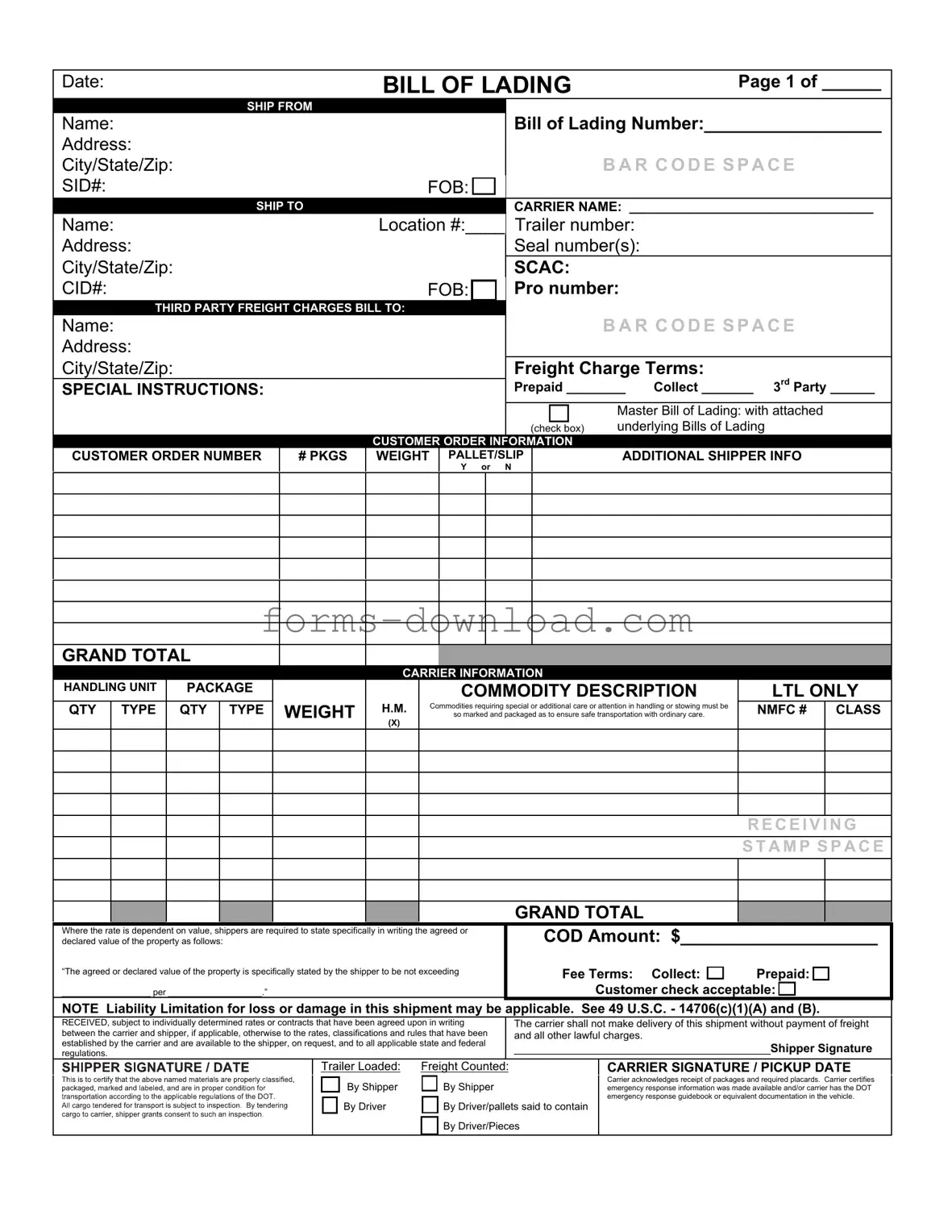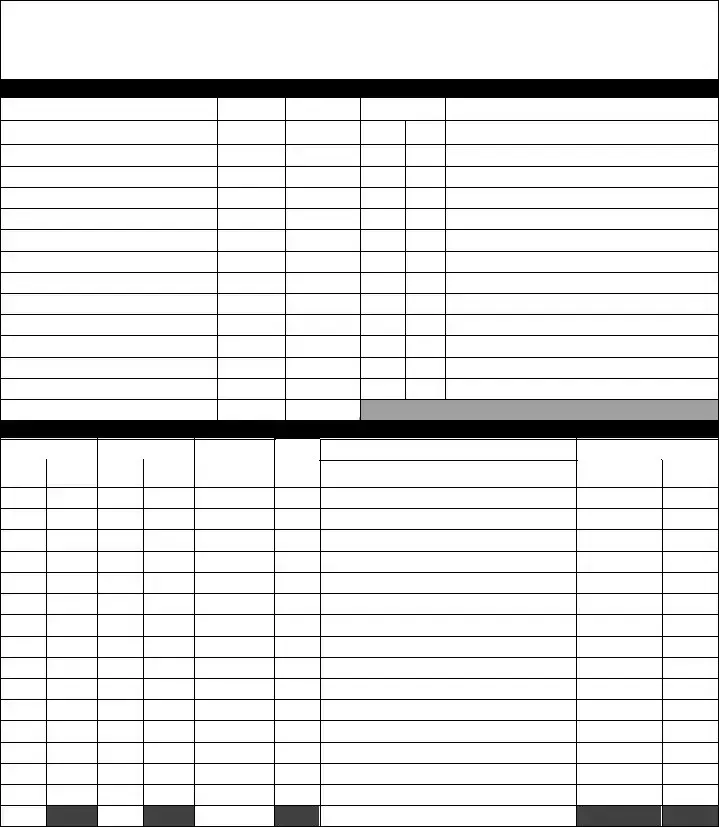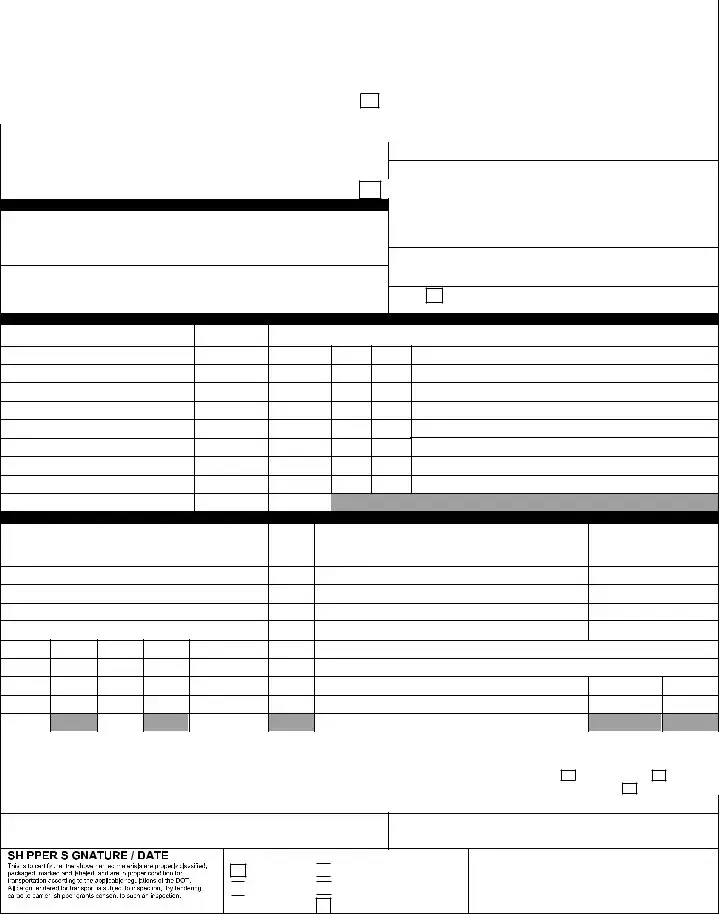The Bill of Lading with a Supplement form plays a crucial role in the shipping and transportation industry, serving as a vital document that outlines the terms of a shipment between a shipper and a carrier. This form not only serves as a receipt for the goods being transported but also acts as a contract of carriage and a document of title. It contains essential information such as the names and addresses of the shipper and consignee, a detailed description of the goods, and the terms of transportation. Additionally, the Supplement section allows for the inclusion of extra details or modifications that may not be covered in the main body of the Bill of Lading. This flexibility is particularly important in complex shipping scenarios where specific conditions or instructions must be clearly communicated. Understanding the nuances of this form can significantly impact the efficiency of logistics operations and ensure compliance with legal requirements. By grasping its components and implications, stakeholders can navigate the shipping process with greater confidence and clarity.


 to certify that the above named materials are properly classified, packaged, marked and labeled, and are in
to certify that the above named materials are properly classified, packaged, marked and labeled, and are in proper condition for transportation according to the applicable regulations of the DOT.
proper condition for transportation according to the applicable regulations of the DOT.
 By Shipper
By Shipper
 By Driver
By Driver 
 By Driver/pallets said to contain
By Driver/pallets said to contain